
STRUCTURAL ENGINEERING AND MECHANICS
Scope & Guideline
Innovative Studies for the Modern Engineer
Introduction
Aims and Scopes
- Seismic Behavior and Design:
Research on the seismic performance of structures, including the development of design methodologies and assessment frameworks to enhance earthquake resilience in buildings and bridges. - Material Innovation:
Focus on the use of advanced materials such as fiber-reinforced polymers, ultra-high performance concrete, and functionally graded materials, exploring their mechanical properties and structural applications. - Numerical and Experimental Analysis:
Utilization of numerical simulations coupled with experimental investigations to validate theoretical models and enhance the understanding of structural behavior under various loading conditions. - Structural Optimization and Control:
Development of optimization techniques for structural design and performance, including control systems for vibration mitigation and damage detection. - Sustainable Engineering Solutions:
Exploration of sustainable practices in structural engineering, including the use of recycled materials and energy-efficient designs to minimize environmental impact.
Trending and Emerging
- Machine Learning and AI in Structural Analysis:
An emerging trend is the application of machine learning and artificial intelligence to predict structural performance and optimize design processes, enhancing efficiency and accuracy in engineering solutions. - Sustainable and Green Materials:
There is an increasing focus on the development and use of sustainable materials, such as recycled aggregates and bio-based composites, to promote environmentally friendly construction practices. - Smart Structures and Monitoring Systems:
The integration of smart technologies for real-time monitoring and assessment of structural health is gaining traction, emphasizing the importance of proactive maintenance strategies. - Advanced Seismic Resilience Techniques:
Emerging methodologies aimed at improving the seismic resilience of structures, including the use of energy dissipation devices and novel retrofitting techniques, are receiving heightened attention. - Dynamic Behavior and Nonlinear Analysis:
Research is increasingly focusing on the dynamic behavior of structures under complex loading scenarios, including the effects of nonlinearities and time-dependent behaviors in materials.
Declining or Waning
- Traditional Reinforced Concrete Analysis:
While still relevant, the focus on basic reinforced concrete design and analysis methods has decreased, as more researchers explore advanced materials and composite systems. - Static Load Analysis:
Research centered on static load conditions is waning, with a noticeable shift towards dynamic analysis and performance under variable loading conditions, particularly in seismic and wind scenarios. - Conventional Construction Methods:
There is a reduced emphasis on conventional construction techniques, as the journal increasingly prioritizes innovative approaches such as modular construction and advanced prefabrication. - Basic Finite Element Method (FEM) Applications:
The traditional applications of FEM in straightforward structural problems are becoming less frequent as researchers pursue more complex and interdisciplinary applications involving machine learning and AI.
Similar Journals
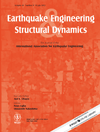
EARTHQUAKE ENGINEERING & STRUCTURAL DYNAMICS
Uncovering new dimensions in structural dynamics.EARTHQUAKE ENGINEERING & STRUCTURAL DYNAMICS, published by Wiley, is a leading journal recognized for its significant contributions to the domains of civil and structural engineering, as well as geotechnical engineering and engineering geology. With an impressive Q1 ranking in multiple categories, including Civil and Structural Engineering, and an esteemed Scopus ranking placing it in the 82nd percentile, the journal serves as a premier platform for disseminating pioneering research and innovative methodologies related to earthquake engineering and dynamic structural analysis. Established in 1972, this journal boasts a comprehensive coverage of topics from theoretical developments to practical applications, making it an essential resource for researchers, industry professionals, and students eager to expand their understanding of seismic safety and structural resilience. Though it does not offer open access, the journal continues to be a cornerstone for scholarly communication within the earthquake engineering community, advancing knowledge that shapes better engineering practices worldwide.

SHOCK AND VIBRATION
Advancing knowledge in shock and vibration phenomena.SHOCK AND VIBRATION, published by HINDAWI LTD, is an esteemed open-access journal that has been disseminating vital research in the fields of Civil and Structural Engineering, Condensed Matter Physics, Geotechnical Engineering and Engineering Geology, Mechanical Engineering, and Mechanics of Materials since its inception in 1993. Based in Egypt, this journal has earned its place within the Q3 quartile rankings across multiple engineering and science categories, showcasing its growing influence and commitment to advancing knowledge in these domains. Accessible to a global audience, it allows researchers, professionals, and students to share findings and foster innovation without paywalls. The journal proudly contributes to a deeper understanding of shock and vibration phenomena, addressing both theoretical and practical applications essential for various engineering disciplines. As a vital resource for academics and industry professionals alike, SHOCK AND VIBRATION serves as a cornerstone for the ongoing exploration and development of cutting-edge solutions in the engineering landscape.

Journal of Structural Integrity and Maintenance
Fostering Excellence in Civil Engineering and Materials ScienceThe Journal of Structural Integrity and Maintenance, published by Taylor & Francis Ltd, serves as a prestigious platform dedicated to the advancement of knowledge in the fields of structural integrity, civil engineering, and materials science. With an ISSN of 2470-5314 and an E-ISSN of 2470-5322, this journal is uniquely positioned to address the critical challenges faced by researchers and professionals in building and construction, mechanical engineering, and related domains. Since its inception in 2016, this journal has been consistently recognized for its quality, currently holding a Q2 rank across several disciplines, including Building and Construction and Civil and Structural Engineering in 2023. The journal aims to publish high-quality research that contributes to the understanding and maintenance of structural integrity, fostering innovations that promote safety, efficiency, and sustainability in engineering practices. Researchers and students alike are encouraged to engage with this rich repository of knowledge, which plays a vital role in shaping future advancements in structural engineering and materials science.

Periodica Polytechnica-Civil Engineering
Bridging Theory and Practice in Engineering ExcellencePeriodica Polytechnica-Civil Engineering is a prestigious journal published by the Budapest University of Technology and Economics, dedicated to advancing the field of civil engineering through high-quality research and innovative practices. Established in 1972, the journal has transitioned through various phases of publication and now spans an expansive range of topics within civil and structural engineering, geotechnical engineering, and engineering geology. With an impact factor indicating its growing influence and a commendable placement in the Q3 quartile according to the latest 2023 metrics, it recognizes contributions that bridge theoretical advancements with practical applications. While currently not open access, the journal remains a vital resource for researchers, professionals, and students seeking to stay abreast of the latest developments in engineering design, construction techniques, and geotechnical innovations. The continuous publication of significant research after almost five decades underscores its commitment to disseminating knowledge crucial for the world’s infrastructure challenges, making it an essential reference point within the engineering community.
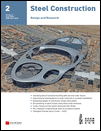
Steel Construction-Design and Research
Pioneering Research in Steel Structural ExcellenceSteel Construction-Design and Research is a premier journal published by ERNST & SOHN, focusing on the latest advancements and research within the field of steel construction and structural engineering. With an ISSN of 1867-0520 and E-ISSN 1867-0539, this journal serves as a vital resource for engineers, researchers, and academics committed to enhancing the design and performance of steel structures. Located in the United States, its reputation is bolstered by its impressive standing in various Scopus categories; it ranks in the Q2 quartile for Building and Construction, Civil and Structural Engineering, Mechanics of Materials, and Metals and Alloys as of 2023. This journal is particularly significant as it captures high-quality research spanning critical years from 2011 to 2012 and 2014 to 2024, fetching valuable insights into the evolving methodologies and applications in steel construction. Although it does not operate under an Open Access model, its rigorous peer-review process ensures that contributors deliver top-tier research, making it an essential publication for anyone engaged in the field.

Electronic Journal of Structural Engineering
Advancing the Future of Structural Engineering ResearchThe Electronic Journal of Structural Engineering (ISSN: 1443-9255), published by EJSE INT LTD, serves as a vital platform for disseminating innovative research and developments in the field of structural engineering. Since its inception in 2001, the journal has evolved to embrace an Open Access model starting in 2022, ensuring that cutting-edge findings are freely accessible to researchers, professionals, and students worldwide. Housed within the reputable Department of Infrastructure Engineering at the University of Melbourne, Australia, the journal focuses on a wide range of topics related to civil and structural engineering, positioning itself within the Q4 category on the 2023 Scopus rankings. While its H-index and detailed scope data are currently unavailable, the journal's commitment to quality research is evident through its continuous publication and engagement with the global academic community. With significant implications for contemporary engineering practices, The Electronic Journal of Structural Engineering not only fosters scholarly discourse but also encourages practical applications of structural engineering advancements.

Journal of Materials and Engineering Structures
Unlocking Potential in Engineering InnovationsJournal of Materials and Engineering Structures is a pioneering Open Access journal published by MOULOUD MAMMERI UNIVERSITY OF TIZI-OUZOU, dedicated to advancing the field of materials science and engineering. Since its inception in 2014, the journal has aimed to provide researchers, professionals, and students with a platform for sharing cutting-edge research and innovative applications in materials engineering and construction structures. Although the HIndex and Scopus ranking data are not specified, the journal plays a crucial role in disseminating knowledge that contributes to the development of sustainable and efficient engineering practices. With its commitment to accessibility and knowledge sharing in the heart of Algeria, the Journal of Materials and Engineering Structures is poised to make a significant impact on both local and global academic communities.
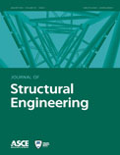
JOURNAL OF STRUCTURAL ENGINEERING
Pioneering Research in Structural IntegrityThe JOURNAL OF STRUCTURAL ENGINEERING, published by the ASCE-AMERICAN SOCIETY OF CIVIL ENGINEERS, is a premier academic journal that focuses on the latest advancements in the field of structural engineering. With a rich history dating back to 1955, this journal has become a crucial platform for disseminating peer-reviewed research that addresses critical issues and innovative solutions in building and construction, civil and structural engineering, materials science, and mechanics. It proudly holds a Q1 quartile ranking across multiple categories in the 2023 Scopus rankings, indicating its influential presence in the academic community. The journal does not currently offer open access options, ensuring that the content is rigorously vetted for quality and relevance, thus appealing to researchers, industry professionals, and students seeking credible, impactful research. With contributions from leading experts, the JOURNAL OF STRUCTURAL ENGINEERING is essential reading for anyone interested in advancing their understanding and practice within this vital area of engineering.
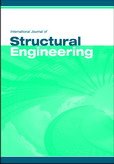
International Journal of Structural Engineering
Pioneering Insights in Civil and Structural EngineeringInternational Journal of Structural Engineering, published by InderScience Enterprises Ltd, has established itself as a vital resource in the field of civil and structural engineering. With an ISSN of 1758-7328 and an E-ISSN of 1758-7336, this journal is dedicated to disseminating high-quality research that addresses contemporary challenges and innovations in structural engineering. The journal operates under a rigorous peer-review process, ensuring that only the most impactful and relevant studies are shared with the global community. Since its inception in 2009, the journal has been recognized for its contributions, earning a ranking in Q3 for civil and structural engineering under the 2023 Category Quartiles and occupying the 40th percentile in Scopus rankings. While currently not an open-access journal, it provides access to a wide array of original papers, reviews, and case studies that are crucial for fostering academic discourse and supporting the ongoing education of professionals and students alike. As it continues to expand its reach until 2024, the International Journal of Structural Engineering remains a cornerstone for those seeking to enhance their knowledge and practice in the dynamic realm of structural engineering.
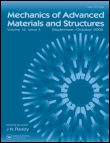
MECHANICS OF ADVANCED MATERIALS AND STRUCTURES
Pioneering the future of civil and structural engineering.Mechanics of Advanced Materials and Structures is a distinguished journal published by Taylor & Francis Inc, focusing on the innovative fields of Civil and Structural Engineering, Materials Science, Mechanical Engineering, and Mechanics of Materials. With ISSN 1537-6494 and E-ISSN 1537-6532, this journal is positioned within the Q2 quartile rankings of its categories, demonstrating its significant scholarly impact. It has been a pivotal platform since its inception in 1997, providing researchers and professionals with comprehensive insights and the latest findings, until the expected closure in 2024. Situated in the United Kingdom, the journal is dedicated to enhancing the understanding of complex materials and structural behavior through rigorous peer-reviewed articles. Its high visibility in Scopus rankings further underscores its importance, making it an essential resource for those engaged in advanced materials research and structural analysis. With options for open access, the journal ensures broad dissemination of knowledge, fostering a collaborative environment for researchers, practitioners, and students alike.